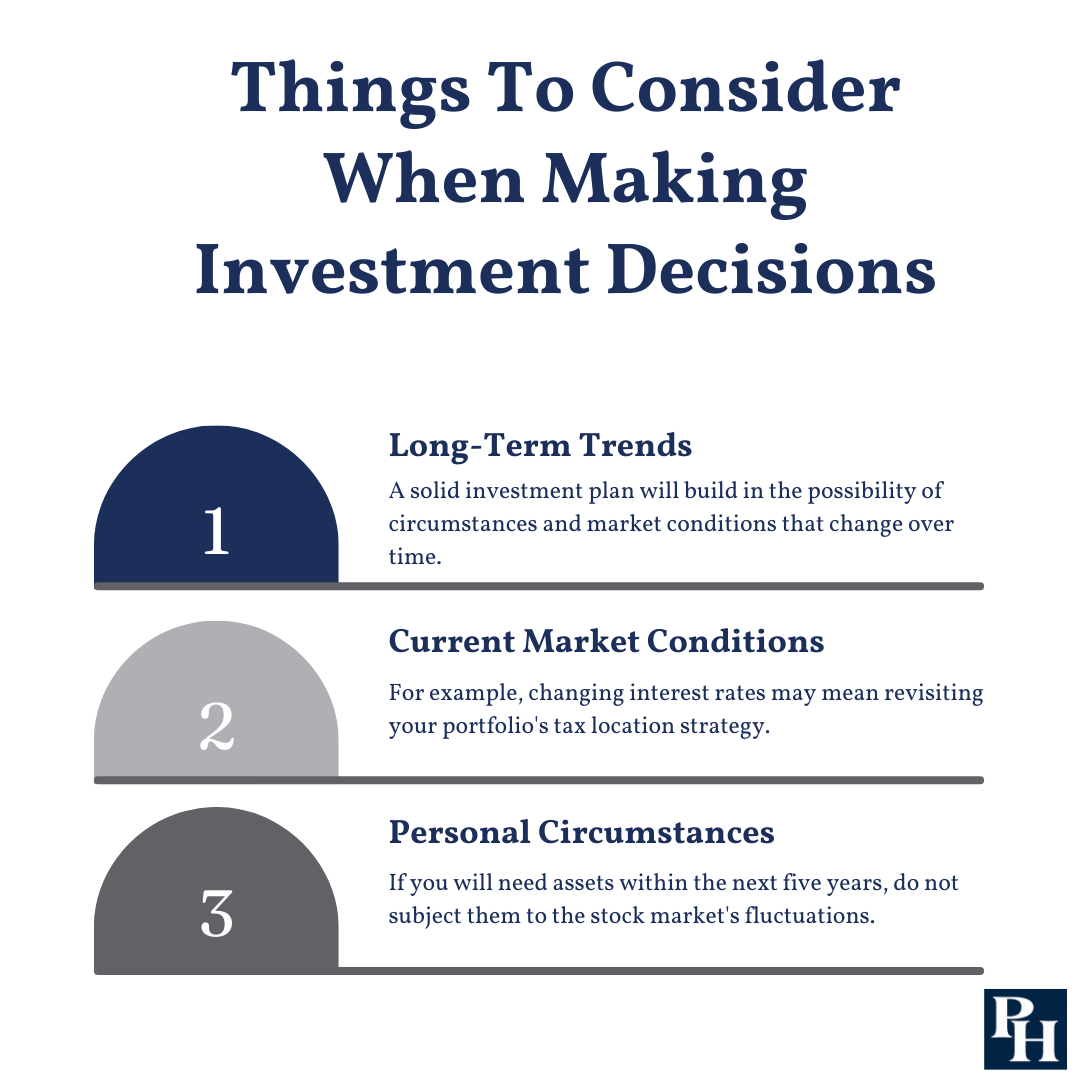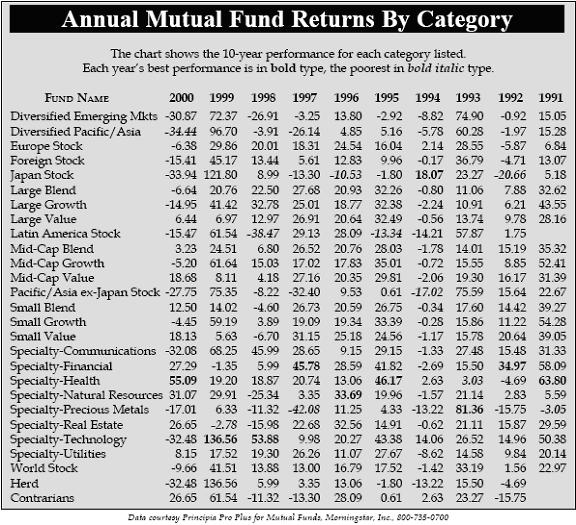No matter the news source you prefer, it likely presents an endless stream of things to worry about. When it comes to your investments, the right response often is to do nothing — except when it isn’t.
I have said in the past that investors are inclined to make changes more often than they should, and I still believe it. Yet leaning too much toward a “set it and forget it” approach also carries risk. The Goldilocks solution is to establish a low bar for reevaluating your plan, but a high bar for actually changing it.
With that in mind, now is the perfect time to revisit your investment mix. You should do this systematically, calmly and with an open mind. When I look at the world, I see a totally different landscape than I saw four years ago. The S&P 500 has more than doubled; interest rates on two-year U.S. Treasuries have increased 25 times (from 0.2% to 5%); we’re no longer locked in our homes; and while there are still plenty of sources of worry in the world, the specifics of those worries have changed.
It isn’t only current events that should trigger a review of your strategy, though. Potentially more important are changes in your personal life. Somehow my son was born, I blinked, and now I’m the father of a 6-year-old. In the words of Ferris Bueller: “Life moves pretty fast. If you don’t stop and look around once in a while, you could miss it.” Time has a way of passing faster than we realize. An investment allocation that was appropriate years ago may no longer serve you. Thinking long term is wise, but that doesn’t mean you should never adjust your investment strategy.
At the same time, while you should review your strategy often, you should not need to change its overall direction frequently if you designed your plan properly. A solid investment plan will build in the possibility of a range of circumstances and market conditions. Often, the adjustments you need to make in your portfolio will not exceed the regular maintenance you expect: rebalancing to your target asset allocation to manage the risks to which you’re exposed.
The reason that normal market movements shouldn’t impact your strategy is that an opportunity or a risk you see in any investment is likely already baked into the price based on other investors recognizing the same factors. Investors often overlook that an investment’s price is a result of the market’s collective view of its future prospects and risk given all current information. The market already has any information that is available to you.
While the market evaluates risk better than you can when it comes to specific investments, you need to incorporate predictions about your own personal circumstances to structure a portfolio that is appropriate for your risk tolerance. A fundamental way to think about risk is based on different time frames for when you will need to spend the invested money. While not a hard-and-fast rule, in general you should not subject money you’ll need within the next five years to the fluctuations of the stock market. Those funds should be allocated to steadier investments or cash.
If your low-risk reserves covered five years of expenses when your costs were lower, that amount may no longer be sufficient. Consumer spending is broadly rising in the U.S., partially due to inflation. In addition, you might need more safe reserves if your kids are approaching college age, you are approaching retirement, or you expect to face long-term care expenses in the next few years.
Even if your costs aren’t increasing, you might decide that you’re less willing to take on risk than you were in the past. As a result, you may want to reserve more funds in conservative investments. Some of my clients have achieved significant financial success over the past few years. As a result, growing their wealth has become less important to them than preserving their existing wealth’s purchasing power. This is a personal decision with no right or wrong answer. Each investor’s objectives and priorities are different, and these should be incorporated into their personal investment plan.
While I still expect stocks to outperform more conservative investments in the long term, the cost of a conservative approach might not be as great now that the interest paid on bonds is more like the historical norm. Higher interest rates also increase the benefits of making tax-smart decisions about where you hold different types of investments. This means you may want to revisit your portfolio’s tax location strategy.
Alternatively, you might have been too cautious in your investments over the past several years and missed out on some of the market’s upside. While trying to always keep up with the best performing asset class at any given moment is a recipe for portfolio disaster, consider whether you have let fear or your political leanings dictate too much of your long-term investment philosophy.
Whether you have been too conservative or too aggressive overall, consider the mix of your investments within broader asset classes, too. Different types of stock investments — U.S. large-cap, U.S. small-cap, international, natural resources and real estate — react differently to economic developments and have different return expectations. I find that when people talk about whether “stocks” are attractive or not, they are often thinking too broadly. A worry about one type of investment might not realistically extend to investments that are even slightly different. Picking the best asset class, or avoiding the worst one, is not a realistic goal, so your plan should focus on proper diversification across the spectrum of stock investments.
Seeking the counsel of an impartial third party, such as a financial adviser, can help you to make good long-term decisions that will help you meet your goals. It can also help you to see when you are stubbornly set in your ways or overreacting to recent concerns. Most importantly, whether you work with an adviser or act solo, keep an open mind. Few things in investing are black and white. Prudent investment decisions should be informed by a combination of long-term trends, current market conditions, and your own particular facts and circumstances. Now is the time to take stock of these considerations to ensure your plan still meets your needs.












